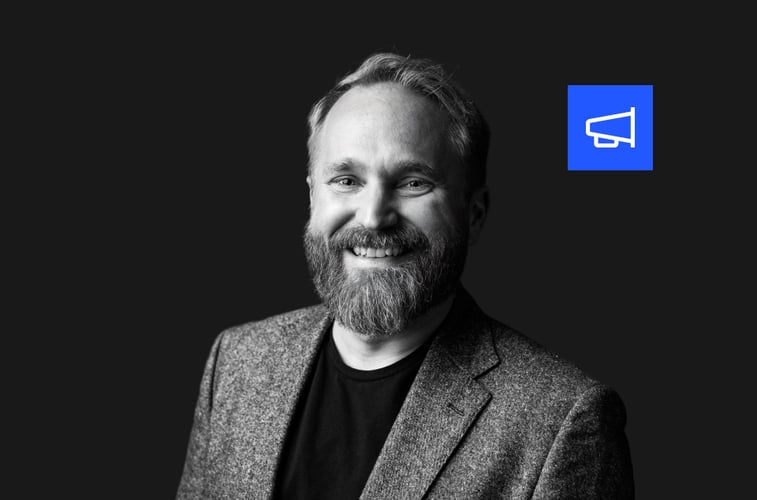In 1989, an English engineer handed his boss at CERN a proposal for an information management system. With that, the Word Wide Web was born. 30 years later, that same engineer gives his thoughts on how far the Web has come – and the distance it still has to go. So, with the Web’s youthful 20s behind us, let’s take a look at three key issues and action points identified by its inventor, Sir Tim Berners-Lee.
Problem #1: Malicious intent
Just as the internet has given us valuable tools that enrich our everyday lives, so too has it given hackers and criminals the means to exploit people for their personal gain.
In a round-up of of 2018 cyber-crime stats, Caprice-community.net points out that cyber-crime will cost $6 trillion every year by 2021. To put that in to perspective, cyber-crime is becoming more profitable than the global illegal drug trade. And yet, Varonis Data Lab found that in 2018, 41% of companies had left over 1,000 sensitive files exposed.
Action: Impactful Code and Legislation
Sir Tim writes that we should introduce laws to address criminal activity on the internet, “just as we have always done offline.” Thankfully, western governments seem to be waking up to the threats of cyber-crime and their responsibilities to curtail it. In the US, a bill to give the IRS more powers to combat cybercrime passed the House of Representatives. Meanwhile, the UK has been ranked as the country most committed to cyber security.
This doesn’t mean we’re out of the woods – companies big and small need to take action to fortify their cyber security, regardless of their sector. In Fall 2018, Forbes reported on business’ increased spending on cyber security. They pointed to a trend where hackers target areas that are more vulnerable, as opposed to those with more money.
In 2017, for example, some 65% of the incidents centred on the entertainment industry, far above the 9.4% in information and 7% in healthcare, not to mention just 5.5% in finance.
While cyber security consultations are certainly advisable, there are some simple measures that companies should take, like keeping software up to date. Plus, central password managers are a good way for IT departments to ensure that users login credentials are secure for services and devices.
LUXID TIP: Don’t forget about mobile devices.
According to IDC, over 70% of businesses have deployed at least two mission-critical applications on mobile devices. Consider a mobile deployment strategy that lets you implement security policies for mobile devices across your workforce.
Problem #2: The wrong incentives
Sir Tim writes that certain systems – such as ad-based revenue models – sacrifice user value to “reward clickbait and the viral spread of misinformation”. Perhaps one such example is behavioural advertising, something that puts social media under the microscope. Forbes points to the use of psychographics and AI to target users based on the emotions of anger and fear. The result: more clicks, more ad revenue.
Actions: Redesign the system
While it’s easy to decry emotion-based ad targeting as immoral, finding alternatives is easier said than done. Other options are becoming increasingly viable, however. Take hyper-local advertising. True Value are working toward giving individual hardware retailers their own marketing program with geo-targeting playing a big role. Opt-in messages puts control in the hands of the consumers, while privacy compliance is achieved with the use of the S4M platform that tracks device location rather than user behaviour.
Another development is the blurring of lines between PR and advertising. “Essentially, advertising is paid media, and PR is earned media,” writes Nancy Marshall for Forbes. The article points to Lincoln Electric, a welding systems manufacturer, as an example: they created a whole magazine targeted at their customer base of welders and metalworkers. This is an example of owned media, where the realms of advertising and PR are distorted. Good content helps to establish good public relations, but also serves as a conduit to promote services and products in a more informative, engaging space.
While there is hardly a magical fix-all alternative for every kind of ad system out here, these examples show that the bottom line is about putting the customer (and their privacy) first in new and innovative ways.
Problem #3: Fake news
The third issue that Sir Tim calls out is to do with how we communicate online. Social media platforms in particular allow people to discuss and share information – but misinformation is just as easily spread. In 2018, 68% of American adults got at least some of their news from social media sites. It’s no surprise then that the tone of online discourse has become “outraged and polarised”.
While the facts behind news stories sometimes spark heated debates, fake news is often highly sensationalised, specifically designed to strike a chord with our frustrations. This leads to more shares, a wider spreading of falsehoods and a deeper fracturing of our grasp on the truth.
Avaaz, one of the world’s largest online activist groups, released a study on the fake news surrounding the Yellow Vest movement. One of the findings was that between 1stNovember 2018 and 6th March 2019, disinformation found in Yellow Vest Facebook groups reached over 105 million views.
Actions: Accountability
In light of their findings, Avaaz are calling for social media sites to take some responsibility for news shared on their platforms.Their proposal involves a five-step process that involves independent fact-checkers. The end result would take the form of non-intrusive notifications shown to social media users when they have been subject to misinformation.
Lawmakers are also taking action to hold social media companies accountable. Recently, the UK government proposed regulations for social media companies with an aim to protect users from content that depicts – among other things – hate crimes or terrorism. In Australia, similar legislation has already been passed, putting accountability on sites such as Facebook and YouTube to find and remove harmful content from their sites.
In terms of purging these platforms of abhorrent content, these are certainly steps in the right direction. However, we might have to wait a little longer before governments take similar action specifically against fake news. Furthermore, questions still linger as to what these laws and proposals mean for freedom of speech, as well as the subjectivity around what constitutes “harmful”.
To wrap up
The Web is not something to be worked on and finished in due time – it’s a growing entity, and it’s up to us to ensure it grows in the right direction. Check out the World Wide Web Foundation’s Contract for the Web to find out more about what action we can take towards building a better Web. Governments, companies and citizens alike have signed the contract including Google, Microsoft, Twitter, Cloudflare, political figures in the UK, US, and France, and Sir Tim-Berners Lee himself.
As the saying goes, Rome wasn’t built in a day. The Web has grown into a beautiful, dangerous place in its first 30 years. Now, the responsibility falls to us to shape the next 30 years of the Web for the better.









